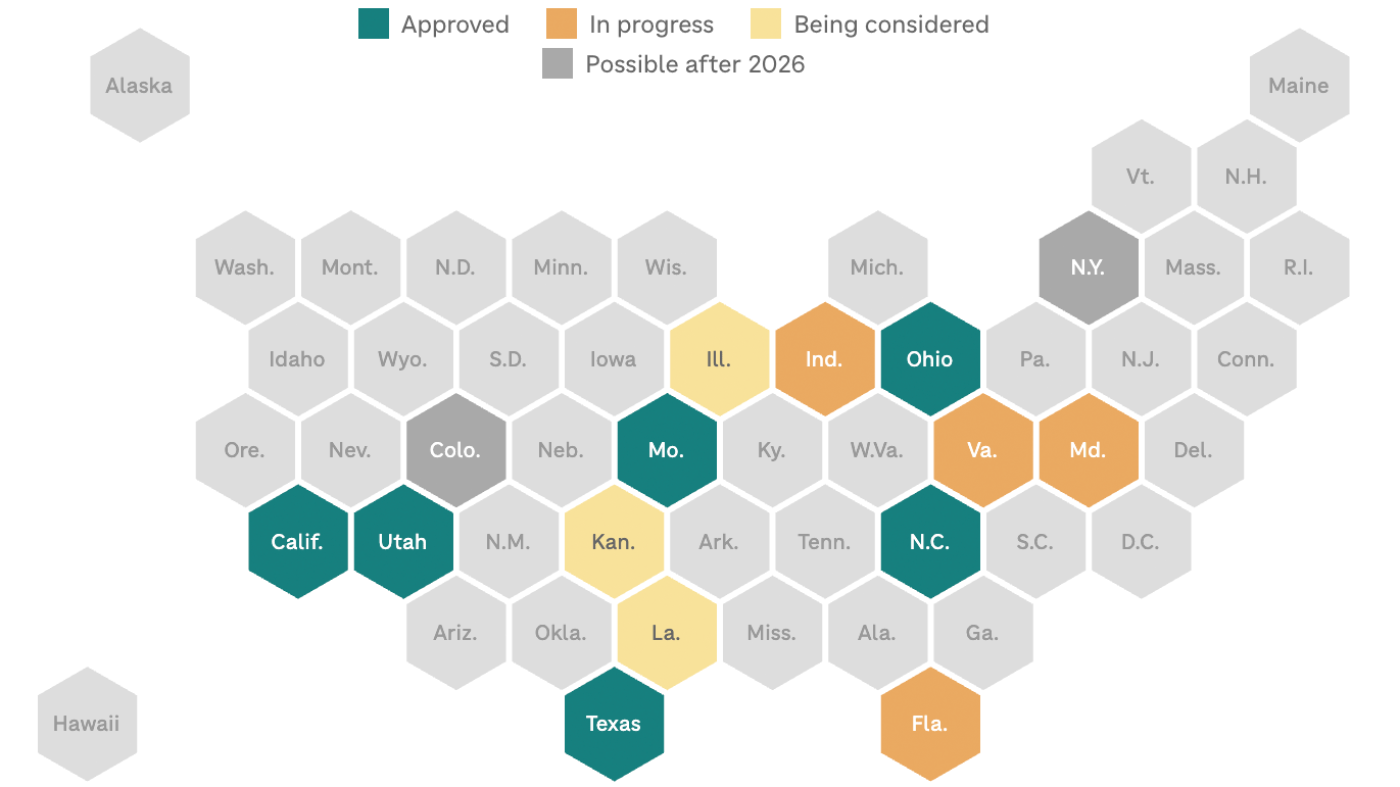For more than a century, the University of Missouri and the University of Kansas have been fervent rivals in college sports. We will have to wait another three months until they play each other again in basketball and another year for the football rivalry to renew once more.
In the meantime, both Kansas and Missouri have proven themselves worthy competitors in another sphere — making it easier for citizens of each state to get a job and begin climbing the economic ladder of opportunity.
In a recent joint publication for the Archbridge Institute and Knee Regulatory Research Center that I co-authored with Noah Trudeau and Sebastian Anastasi, we rank states based on the number of occupations that they license.
What is occupational licensing? Occupational licensing makes it a crime to begin working in a new occupation before meeting minimum entry requirements.
People are also reading…
These requirements include minimum levels of education and training, paying fees to the state, passing exams, and meeting other requirements. Lawyers and doctors are licensed in every state. So are barbers and cosmetologists. Next year, ocularists — professionals that design and fit prosthetic eyes — will be licensed in just one state: Washington.
In our report, we rank states based on how many occupations they license, drawing from a list of 284 occupations across all 50 states and the District of Columbia. We find that Texas licenses more occupations than any other state — 199 of the 284 occupations. Missouri and Kansas round out the bottom — coming in at 137 and 136.
But in this case, being at the bottom of the index is a great thing.
What this means is that both states are very careful when using licensing as a regulatory tool. It doesn’t mean that either state is reckless or letting consumers fend for themselves. Instead, both states seem to recognize that licensing is not always the right regulatory tool.
Other states should follow the lead of these sports rivals and make sure that regulation is not too stringent.
Why should licensing be a last resort? We know that licensing is very costly. Economists have been studying the costs of occupational licensing for decades. In a report released by the Obama White House in 2015, a summary of the literature revealed that licensing increases the price of services consumers receive by as much as 13%.
And unfortunately, besides some evidence of early licensing of midwives and physicians, there is very little evidence that licensing improves the quality of services that consumers receive.
We also know that licensing reduces employment — exactly what we don’t need when we have a national shortage of skilled workers. This is why it is critical for policymakers to only use licensing as a last resort.
Professionals seeking licensing should be able to formally document the harms that licensing is meant to fix. And if less costly alternatives are available that can do the job, such as private certification or registration, or even market competition coupled with online reviews, regulators should choose the least costly option.
Another key cost of occupational licensing is that reduces mobility — licenses do not easily transfer from state to state. Thankfully, Kansas and Missouri are both among national leaders that have helped eliminate this friction by making it easier for licenses to transfer across state lines.
Although Kansas and Missouri should be applauded for being national leaders on being prudent with licensing requirements, they can still push each other to do better. Rivals on the athletic field can also be rivals on worker freedom.
Gov. Mike Parson in recent social media postings highlighted the state’s ranking and noted his administration’s commitment to cutting regulatory red tape. Here’s hoping this important rivalry can spread and improve the lives of citizens in both bordering states.
Timmons is a service associate professor of economics and director of the Knee Regulatory Research Center at West Virginia University. He is also a senior research fellow with the Archbridge Institute.










































